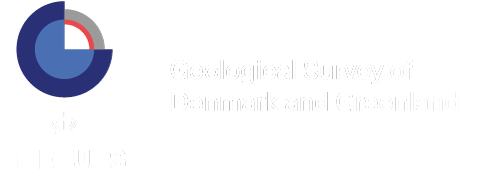Expeditions and field work
The Arctic
Due to the severe ice and weather conditions and the remoteness of the area north of Greenland as well as the great distances to the nearest infrastructure, data acquisition is a major logistical challenge.
Since spring of 2006 a total of six data acquisition projects have been carried out in the area north of Greenland, the three LOMROG cruises in 2007, 2009 and 2012 in co-operation with the Swedish Polar Research Secretariat, and the rest in close co-operation with Canada:
- The LORITA expedition in the spring of 2006 – acquisition of seismic refraction data using the Canadian Forces Station Alert on Ellesmere Island as a base.
- The LOMROG I expedition in the summer of 2007 with the Swedish icebreaker Oden in co-operation with the Swedish Polar Research Secretariat and with the Russian nuclear icebreaker 50 let Pobedy as lead icebreaker – acquisition of primarily bathymetric, seismic and gravity data. A Canadian hydrographer participated in the cruise.
- Acquisition of bathymetric and gravity data on the sea ice in the spring of 2009 with a Canadian ice camp close to Ward Hunt Island as base.
- Acquisition of airborne geophysical data in the spring of 2009 on both sides of the Lomonosov Ridge.
- The LOMROG II cruise in the summer of 2009 with the Swedish icebreaker Oden in co-operation with the Swedish Polar Research Secretariat – acquisition of primarily bathymetric, seismic and gravity data. A Canadian and a Russian hydrographer participated in the cruise.
- The LOMROG III cruise in the summer of 2012 with the Swedish icebreaker Oden in co-operation with the Swedish Polar Research Secretariat – collection of dredge samples from the Lomonosov Ridge and acquisition of seismic, bathymetric and gravity data.
Thus, the project followed the concept for the data collection that was developed during the so-called pre-project in 2002. The 2012 LOMROG III cruise completed the data acquisition in the area north of Greenland within the Continental Shelf Project.
Other areas
In the two other submission areas in Greenland and the two areas around the Faroe Islands, the conditions regarding the field work were less rough with considerably less sea ice or none. The Continental Shelf Project carried out a series of expeditions in order to chart the water depths and the thickness of the sediments under the seabed. Furthermore, focus was on the geological characterisation of relevant submerged elevations and plateaus such as the Eirik Ridge south of Greenland, the East Greenland Ridge in North-East Greenland, the Aegir Ridge north of the Faroe Islands and the Faroe-Rockall Plateau south-west of the Faroe Islands. Amongst other things, the scientists acquired seismic refraction data and retrieved geological samples from the seabed.
You can find more information about some of the expeditions here:
- Cruise in 2004 to the Faroe-Rockall Plateau with the ships ESVAGT Connector and Polar Princess
- CCGS Hudson cruise 2009 – Danish-Canadian seismic cruise in the Labrador Sea
- EAGER 2011– mapping of the East Greenland Ridge with the Swedish icebreaker Oden
The Continental Shelf Project, video by Kenneth Sorento Film © 2018

